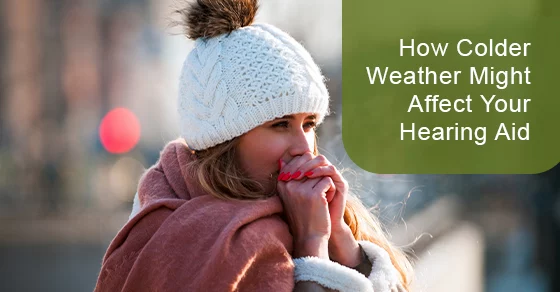How Colder Weather Might Affect Your Hearing Aid
Posted by Living Sounds

During the winter, the biggest threat to hearing aids is moisture. The problem with cold weather is that it often includes rapid changes in temperature to your device. If you’re outside, the drop in temperature might be extreme from that of a heated home or car. These rapid changes in temperature can produce condensation on and in the hearing aid. It’s optimal to check your hearing aid regularly in cold weather to guard against damage caused by moisture. Temperature does in fact affect hearing aid batteries as well. Hearing aids typically receive enough warmth from the body to keep the battery going. Left your hearing aids in the car outside overnight? The battery may just need a little time to warm up and properly power the hearing aid.
If at any time you feel your hearing aid is not working the way it should, please contact us.
How Will I Know if My Hearing Aid Is Moisture Damaged?
If your hearing aid is in fact damaged, it will let you know. It’s important to note that these signs can also occur because of a damaged or dead battery. The first thing to do is check the battery. If the battery is corroded in any way, dispose of it immediately. Change the batteries and see if the problems persist. If so, here are symptoms of a hearing aid needing service:
Fading Sound
The sound fades in and out or doesn’t stay at the same volume level consistently.
Static
Hear static frequently or each sound seems to have a trace of static after it? There may be a moisture issue.
Stops Working
If your hearing aid stops working completely with no warning, or stops and starts intermittently, it may need service.
Clarity
If the sound is no longer crisp, there may be a problem.
Do These Signs Mean There’s Moisture Damage?
Fortunately, today’s hearing aids are largely moisture resistant, but there may be interruptions of service from condensation that won’t cause permanent damage. Thankfully, there are several things hearing aid users can do at home if this occurs.
Troubleshooting
A good visual inspection is always the first step in troubleshooting any device and is a good rule to follow with hearing aids. First, look over the device carefully for obstructions in and around the microphone and speaker (receiver). Next, check that any controls on the device are in the right position. Does your device have a tube or wire connecting the piece behind the ear to the earmold or tip that inserts into the ear? If so, then you should also check whether it is frayed or cracked. If it is a tube, check for obstructions from excess moisture or wax. With any hearing aid, check for earwax and debris in and around the piece inserted into the ear. Lastly, if your devices have replaceable batteries, check the battery contact points to make sure they’re clean and dry. If the batteries are rechargeable, check the charge status.
Take precautions to protect your hearing aid from moisture damage. Use a hearing aid drying kit to help prevent moisture from building up. Remove replaceable batteries right away if you suspect moisture exposure. Other precautions include covering the device and making sure to use hats and other outerwear to protect your hearing aid from the weather. Rechargeable hearing aids are carefully designed to prevent moisture from affecting the battery. Should the rechargeable device get wet in any way, dry it and turn it off immediately. Putting it on a charger is OK if it is working. However, if it feels warm or isn’t working, do not try and recharge until the device is completely dry.
Seek Professional Help for Serious Cold Weather Related Hearing Aid Troubleshooting
Unfortunately, you may have moisture damage if you’ve carefully checked your device and the problem persists. If you need help repairing your hearing aid, please contact us for assistance.

